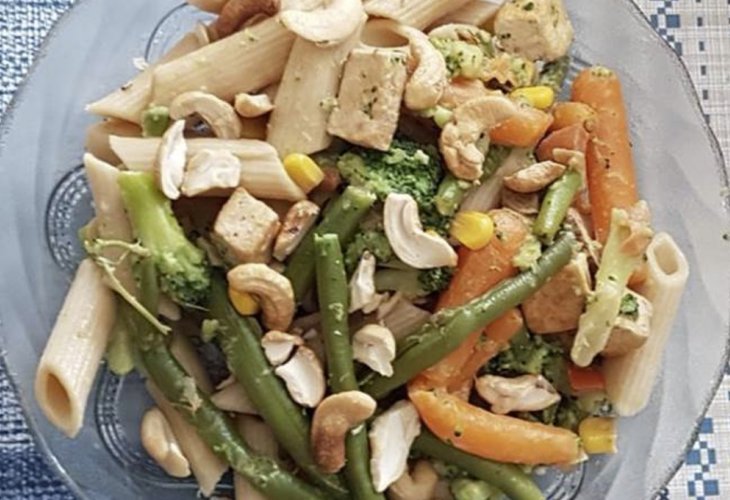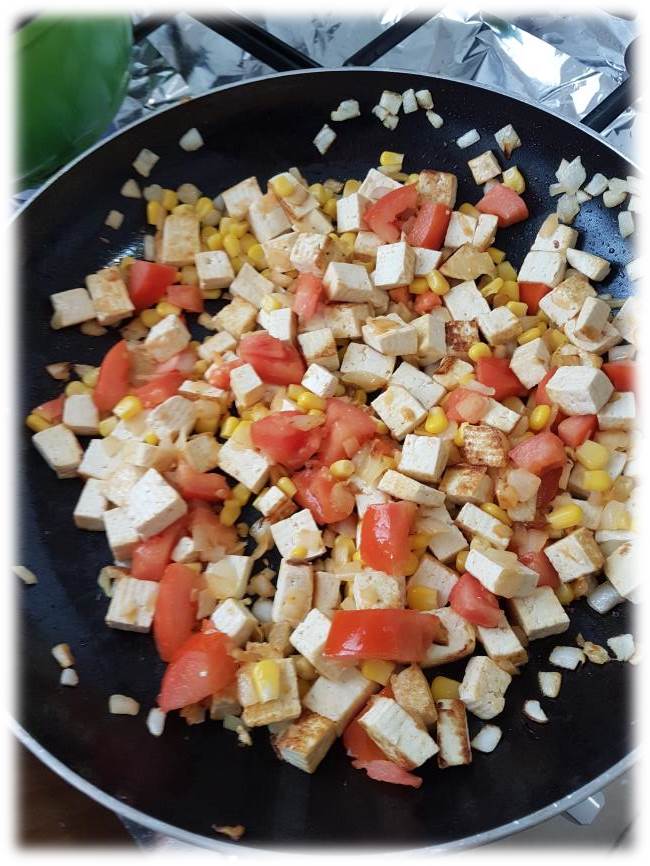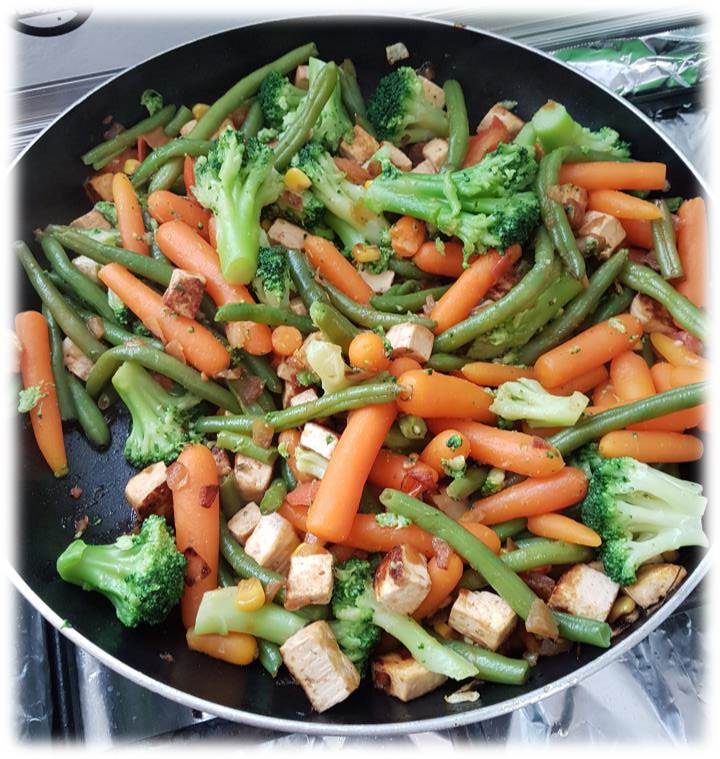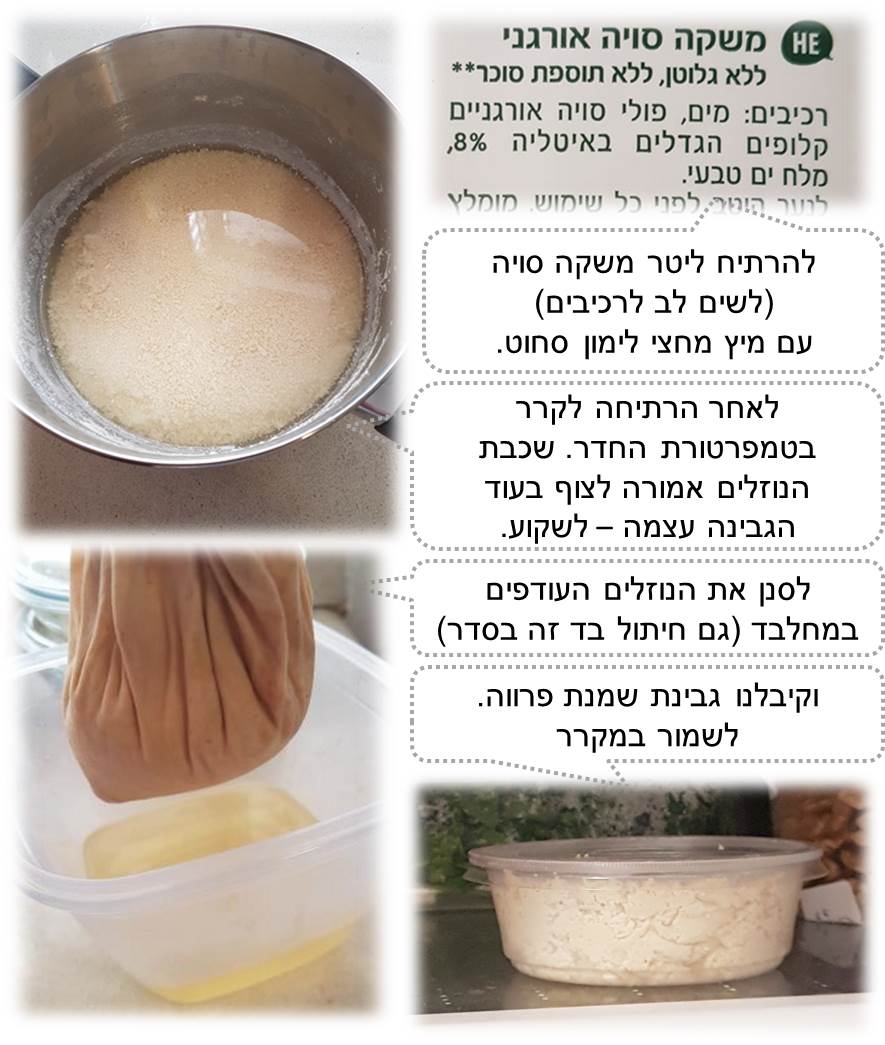Soy: A Hidden Gem or a Health Risk?
Recent studies reveal soy's numerous health benefits, debunking myths of harm. Enjoy a delightful soy-based lunch recipe.
 Pad Thai Pasta
Pad Thai PastaHello and blessings to my dear sisters (apologies to the men in the group and thanks to the dear reader who pointed this out in my last article, I greatly appreciate and thank each of you who shows interest and reads my articles—it's an honor. But since most of my audience is women, with your permission, I'll continue writing in feminine form; you understand, right?).
Let’s continue with plant-based protein lunches.
When we talk about plant-based protein, we can’t ignore soy!
Absolutely, we can't.
Soy is a legume incredibly rich in high-quality protein.
But it's not just about protein—soy is also rich in:
Calcium (for building healthy and strong bones),
Iron (for oxygen transport to body tissues),
Zinc (for a strong immune system, wound healing, and also skin and hair health),
Magnesium (for our muscles),
Potassium (for heart health),
B Vitamins (for the development and functioning of the brain and nervous system),
Essential fatty acids needed for our bodies, fiber, and even antioxidants.
 Important to read ingredients before buying
Important to read ingredients before buyingHowever, when soy is mentioned, scary terms pop up like: phytoestrogens (a phyto-chemical similar to the female hormone estrogen), genetic engineering, phytic acid...
Let me reassure you; after about 12 years and nearly 200 studies on the subject, a new and updated publication by “Atid” (the Israeli Dieticians and Nutritionists Association) and the Ministry of Health states:
"Consumption of soy is safe at all life stages, including infancy, childhood, and adolescence for both women and men, and may even offer advantages in various health situations."(Quote from the Ministry of Health website).
Further documentation explains how previous beliefs against soy were not only disproved but the opposite turned out to be true—in short, soy was unfairly vilified.
So let’s together correct this and prepare an excellent soy lunch.
When I want to treat my kids to something special for lunch, the magic word is Pad Thai Pasta!
A Thai/Italian fusion cuisine.
To make this delicacy, you need tofu cheese.
But not just any tofu cheese is good.
Let’s rewind to the second article in this series about "Nutrition and Belief" on the Hidabroot website.
For those who remember, we learned how to read ingredient lists and choose products with the fewest preservatives, E additives, and other strange and unfamiliar names.
There are tofu cheeses containing various unnecessary and not-so-healthy additives, and there are those containing only soy and possibly an additive to aid cheese coagulation like calcium chloride (or simply put... calcium).
Of course, we choose the latter.
And for the recipe:
Boil water in a pot.
Once boiling, add your choice of frozen vegetables.
I like to add green beans, corn kernels, carrots, and broccoli (of course, grown without insects).
Alternatively, you can add a mix of Chinese/Thai vegetables.
As it boils again, turn off the gas and drain the liquids.
In a separate pan, sauté onions.
Add tofu cubes and fry until the onions and tofu are golden.
You can also add tomato cubes/halved cherry tomatoes (did you know tomatoes, already healthy, become even healthier after cooking?)
Near the end, add soy sauce.
 Light frying for tofu cubes with your choice of vegetables
Light frying for tofu cubes with your choice of vegetablesAdd the separately cooked frozen vegetables to the mix and stir.
Slowly pour the secret winning ingredient which thickens and gives the dish its unique oriental flavor and aroma.
 Add the blanched frozen vegetables
Add the blanched frozen vegetablesMy kids aren’t big fans of rice noodles, so I serve it with whole wheat pasta.
And for those over the age of 6, feel free to sprinkle roasted cashews on top, ensuring they are halved and insect-free.
Simple, right?
Although we're still talking about lunch, since we're on the topic of soy, here's a quick night snack recipe for us adults.
Toss frozen edamame into a pot of boiling water. Once it reaches a second boil—drain, and season with coarse salt.
Delicious and addictive—and definitely better than munching on nuts.
As a girl who grew up in New York, I loved eating the iconic Jewish dish that's a staple in Queens' dairy shops: bagel with cream cheese and lox (smoked salmon).
While in Ashkenazi traditions it's okay to eat fish with dairy, in Sephardic traditions it's not.
My dear husband—and best friend—is of Sephardic descent.
So today I follow Sephardic traditions.
Therefore, my lox comes with pareve cream cheese, which is very easy to make:
I boil a liter of soy milk (with ingredients listed as only soy—remember?) with half a squeezed lemon.
I wait for it to cool, then strain through cheesecloth.
That’s it. Into the fridge.
By the way, I also have a fantastic homemade lox recipe, like the good old days in Europe. This recipe, along with many other excellent ones, I received from a dear study mate (thank you, Carmen!).
With Hashem's help, I'll share it in a future article.
 Soy cheese
Soy cheeseI'd like to share with you that in our last class, our lecturer, Noa Oliel, talked about soy flakes and how they can be used to make countless dishes such as vegetarian shawarma and vegan Bolognese.
It's embarrassing to admit, but I had no idea what she was talking about.
So I rushed to the health food store and bought these soy flakes.
If any of you readers know a good recipe—I'd love to hear in the comments.
If not, I’ll simply turn to Chef Google for a recipe—the soy flakes challenge!
Assuming my taste testers (husband and kids) like the result—we have a follow-up soy article, if not, then we'll move straight to the next topic: starchy vegetables (potatoes and corn).
Until then, wishing you lots of health,
Chen Tovi
By the way… the secret winning ingredient I wrote about earlier? Thick, sweet, and rich coconut milk—the secret to creamy pareve dishes.

